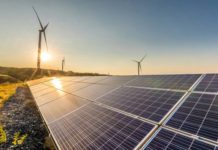India is projected to exceed its 2030 emissions intensity reduction target, thanks to strong climate policies, growing clean energy adoption, and a focus on energy efficiency. According to a new analysis by the Council on Energy, Environment and Water (CEEW) and the Alliance for an Energy Efficient Economy (AEEE), the country could reduce energy sector emissions intensity by 48–57% from 2005 levels by 2030, outperforming its Nationally Determined Contribution (NDC) goal of a 45% reduction.
Strong Momentum, But Net Zero Needs More
Despite this positive trajectory, India’s path to net-zero emissions by 2070 will demand deeper policy action. The study, published in the Energy and Climate Change journal, recommends new policy levers including carbon pricing, power tariff reforms, fiscal incentives for clean tech, enhanced efficiency, and behavioural change programs.
Modelling Future Pathways with Indian Context
The study titled ‘A New Scenario Set for Informing Pathways to India’s Next Nationally Determined Contribution and 2070 Net-Zero Target’ uses the India-specific Global Change Analysis Model (GCAM) to evaluate 18 scenarios. It proposes that India’s 2035 NDC could target a 55–66% reduction in emissions intensity (relative to 2005) and a 60–68% share of non-fossil fuels in power capacity.
“India has proven that economic growth and emissions reduction can go hand-in-hand. With reforms in electricity pricing, industrial planning, nuclear power, and sustainable urban mobility, we can move closer to net-zero,” said Vaibhav Chaturvedi, Senior Fellow at CEEW.
Energy Efficiency: A Critical Enabler
The analysis integrates demand-side energy efficiency as a core modelling component—highlighting the real-world potential of consumer behaviour and efficiency gains. “By embedding energy efficiency into climate modelling, we reflect India’s ground realities more accurately. This marks a move toward more holistic and equitable climate policymaking,” noted Satish Kumar, President and Executive Director of AEEE.
Viksit Bharat Vision: High Growth, Lower Intensity
The study also considers a high-growth scenario aligned with India’s Viksit Bharat ambition. While such growth could raise absolute emissions by 63% by 2070 (compared to business-as-usual), emissions intensity would still decline by 3%, driven by cleaner technologies and renewable integration. Sectors like semiconductors could lead the transition by embracing low-emission, electricity-driven manufacturing.
Mission LiFE: Behavioural Shifts Deliver Big Gains
Lifestyle changes under the Mission LiFE framework—such as reduced private vehicle use, energy-efficient appliances, and smarter residential energy use—could cut emissions by up to 10% by 2050. These changes would also ease pressure on land and reduce costs, especially when supported by mandates for energy-efficient products. As reported by pv-magazine-india.com, India’s clean energy progress continues to gain global recognition. As this analysis shows, with the right mix of technology, policy, and behavioural change, the country can lead the charge toward a more sustainable and resilient future.

































